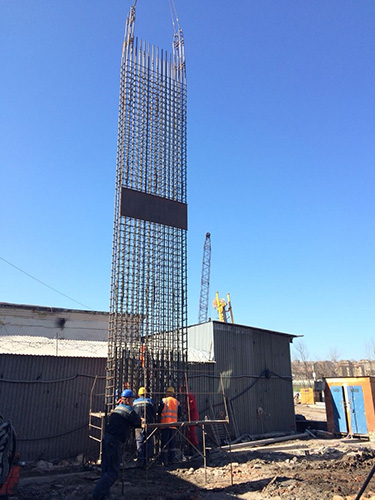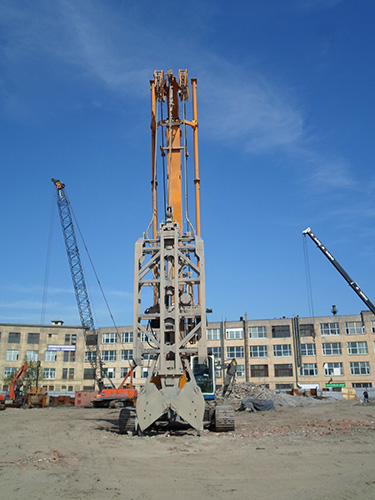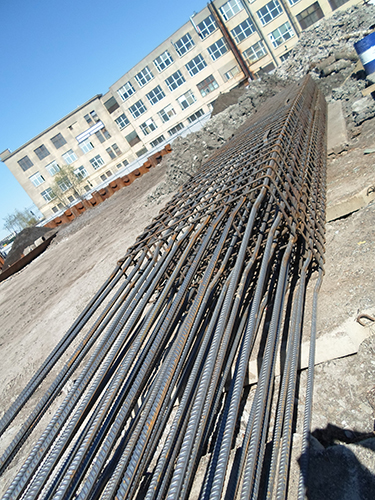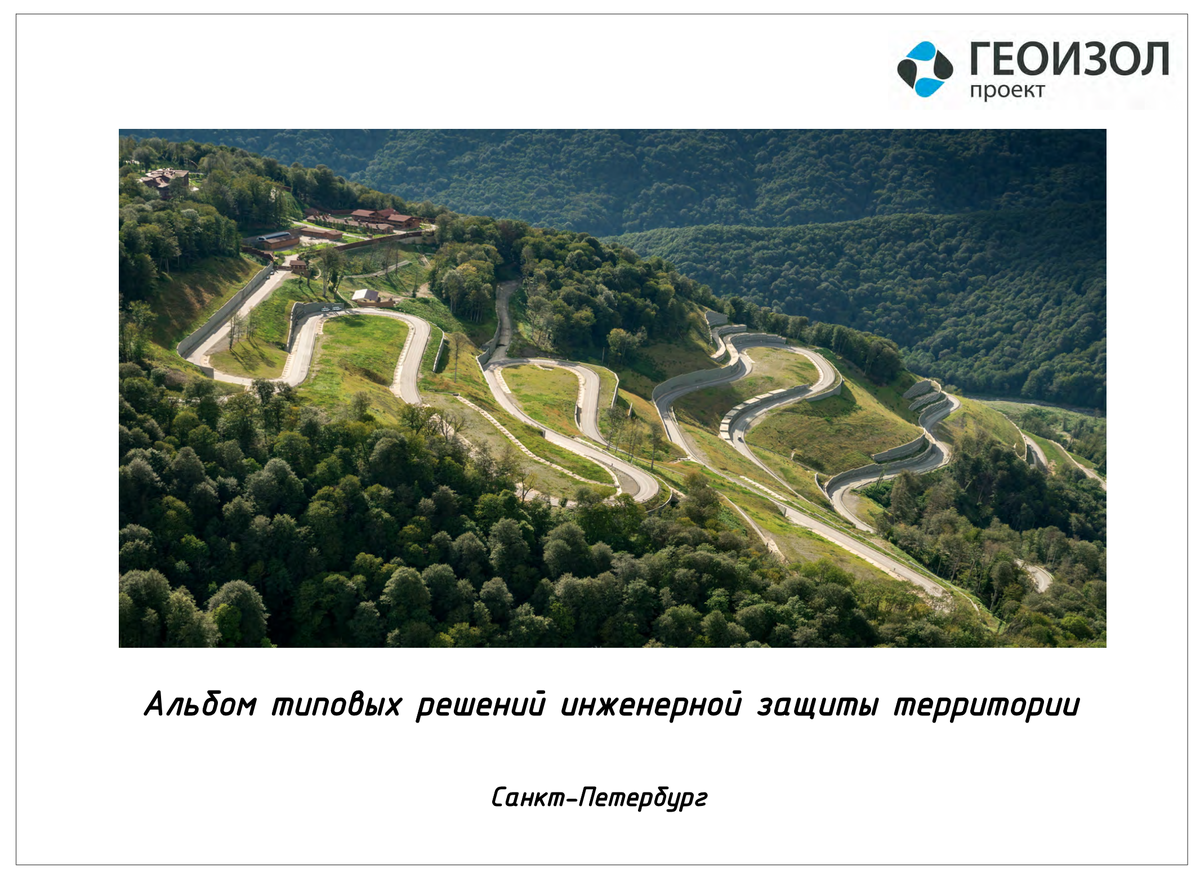Slurry wall technology is a modern and gentle method of substructure constructions which is used in case the depth of foundation is more than 4 meters below ground surface.
This technology has proved its efficiency on plenty of underground construction objects, not only in Russia but worldwide.
The features of the technology
Slurry wall is made by creating a vertical load bearing reinforced concrete retaining walls of substructures. These reinforced concrete retaining walls are made by digging a deep narrow trench which is filled with bentonite. Later bentonite is ejected by thick concrete solution or reinforced elements.
There are two methods of slurry wall construction: cast-in-place and precast methods.
The advantages of the technology:
- can be performed up to a depth of 50 m;
- applied in case of high ground water;
- perfectly applicable for new construction in cities with densely built-up areas;
- can be used as ground water cutoff;
- multipurpose construction. Ability to perform several functions at the same time: excavation pit retaining structure, load bearing wall, ground water cutoff;
- no dynamic loading on the buildings and facilities located close to the construction site.
The design features:
During the development of slurry wall design documentation the following is to be considered:
- actual loading;
- impacts that occur during the construction and further operation of buildings;
- impacts of the objects resting on the structure;
- impact of the building located close to the object under design.
The development of the design documentation of the objects according to the slurry wall method with the depth of substructures more than 15 m (is referred to unique objects) requires a particular approach. One of these requirements is carrying out the calculations to comply with the terms on prevention of progressive damage on every stage of the object life cycle. In other words, to prevent such a condition that in case of emergency destruction of one constructive unit the other elements and parts of the building preserve their properties and prevent progressive collapse of the whole object.





